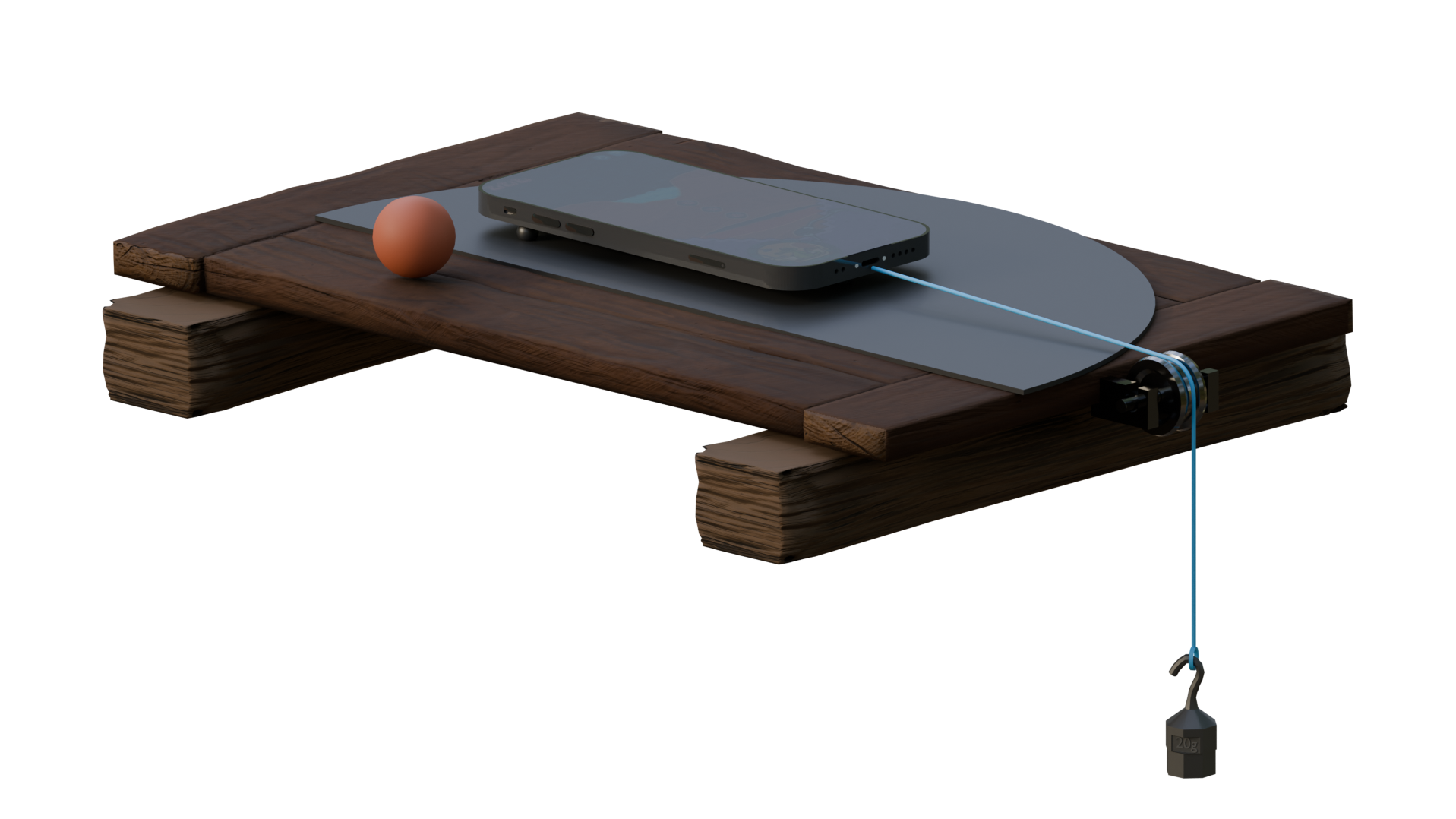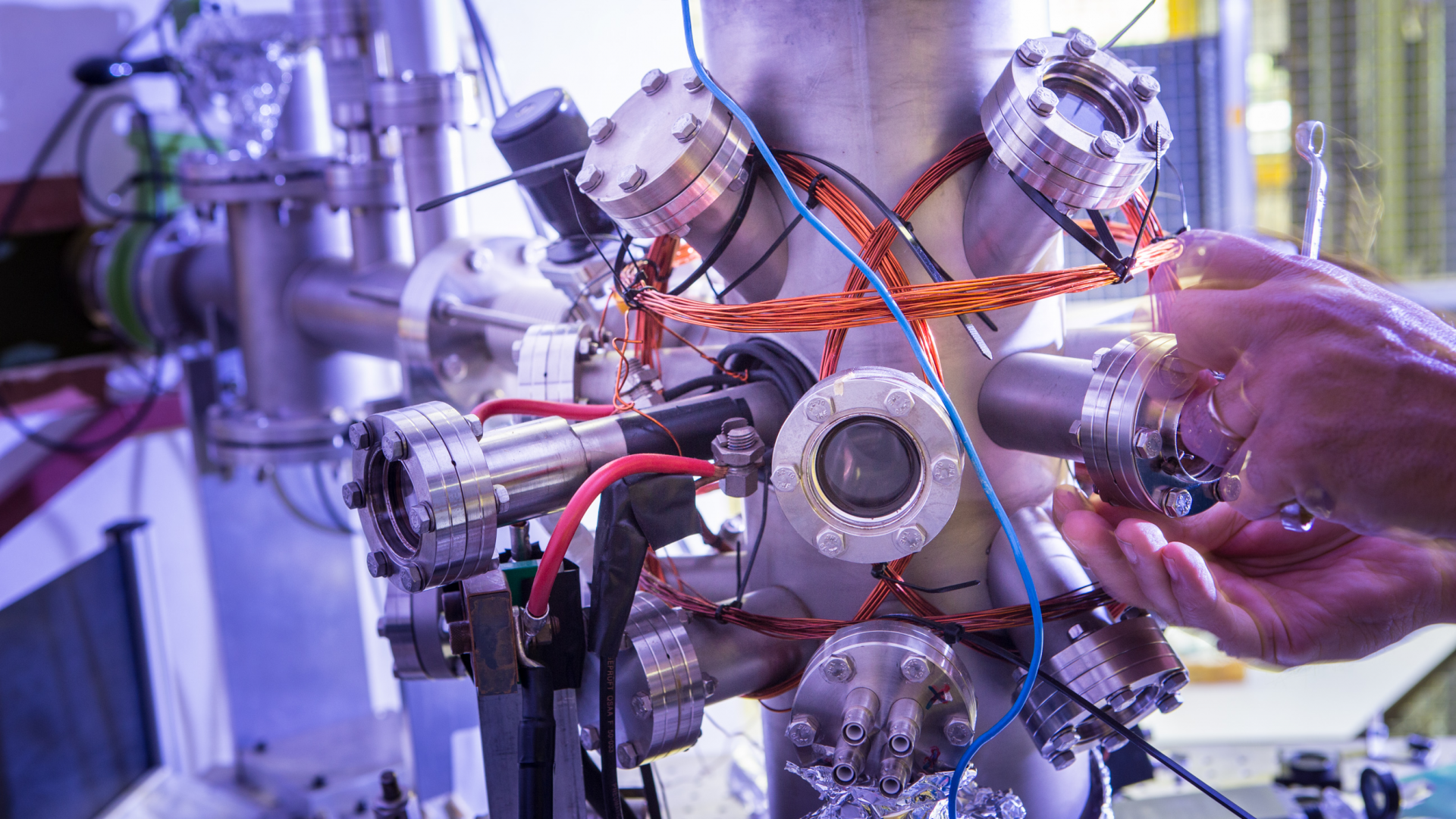First-year bachelor students complete research project at ARCNL
A group of physics bachelor students spent two weeks in group leader Bart Weber’s lab at ARCNL, to do a research project as part of their studies at the University of Amsterdam (UvA). They were tasked with investigating how the friction forces and sliding between silicon surfaces are affected by vibration.
Ramping up the curriculum
Mika Baltus, Neville Blokker, Josha Brussee, Jurre Dekker and Bernd van Herpen just finished the first year of their physics bachelor at the University of Amsterdam (UvA). As part of their curriculum, they were invited to do a group project at one of the nearby research institutes. A few of these group projects took place at ARCNL this year, and this particular group found themselves in Bart Weber’s Contact Dynamics lab.
Bouncing rubber balls for science
Their project was inspired by the challenges of clamping silicon wafers in computer chip manufacturing machines. When a wafer slides against the surface of the clamp, it can affect the machine’s accuracy when printing the layers on top of it.
To get started, the students received simple but open-ended instructions. “We were given two papers that explain the setup,” says Mika, “and told to do something fun with it.”

Small silicon balls were glued to a smartphone, which made measurements of its own acceleration. This phone-setup was attached to a string with a weight hanging from it and placed on a separate silicon plate. The weight was just enough that the phone-setup would start to slide across the plate, but be barely stopped by friction. The strength of this friction force depends on how much the silicon balls and plate push against each other.
Then, by bouncing a rubber ball on the table, the students created vibrations in the silicon plate, making its push against the silicon balls, and therefore the friction force, weaker. Because of this, the phone-setup slides a bit, until the vibration stops, and the friction returns to normal strength.
The question was: can you predict the sliding that comes from the combination of vibration and friction?
Based on the smartphone’s acceleration measurements, the students were able to determine the strength of the friction forces, to predict how the setup will move over time during the vibration. By showing that vibrations can overcome friction and make the phone-setup slide, the results suggest that further research at much smaller scales could contribute to development of silicon wafer-clamping technology.
“An amazing opportunity”
The real results were the friends they made along the way: “The atmosphere at ARCNL is very open, and people like to stop and chat,” shares Mika.
Mika and her classmates reflect positively on their ARCNL research project. “It’s been a lot of fun,” says Mika, “a big change from attending lectures and doing homework. This felt a lot more ‘realistic’, like what we’d actually be doing in the future, so it was an amazing opportunity.”
We’re happy to have welcomed these bachelor students for projects at ARCNL this year, and wish them the best of luck in their future endeavors!
Want to do your own research at ARCNL?
See our vacancies for internships, PhD positions and more: Jobs – ARCNL








